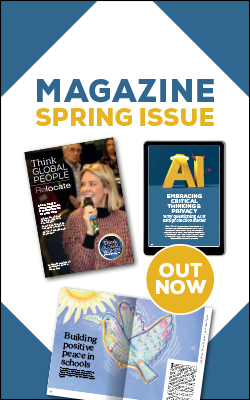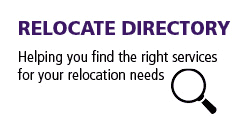Employee relocation and assignment trends: towards flexibility and personalisation
Icon Relocation’s CEO Simon Johnston discusses how trends in relocation are significantly changing to reflect broader shifts in work culture, lifestyle preferences and the economy. He tells Marianne Curphey how technology can help manage challenges like rent volatility, assignee expectations and communication.

This article is taken from the Leadership Supplement the Spring 2025 issue from
Relocate Think Global People
Click on the covers to access the digital editions.Traditional relocation practices, which are often focused on senior employees moving for long-term assignments, have evolved to include a wider demographic group, particularly younger workers and those with expertise in the tech sector. There is also an increasing emphasis on short-term relocations and ‘bleisure’ trips, where employees add on extra days to explore a city after their business meetings have finished.“Companies are now more attuned to employees' mental wellbeing, lifestyle needs and the role that technology plays in finding suitable housing and rentals, matching assignees to locations and answering questions in real-time,” Simon says.He has identified key trends shaping the relocation industry today and says that technology is a powerful tool to manage relocation packages, mitigate budget constraints and communicate with an increasingly tech-savvy cohort of assignees. However, the human touch is still important.
Demographic change demands a new approach
While permanent relocations remain rare, short-term assignments have gained momentum, particularly among younger employees. These assignments are typically for a short period, often six months to a year, allowing companies to meet specific project needs without committing to long-term moves.Often, these employees are single and more willing to embrace the flexibility of temporary relocation, with some happy to live in shared spaces. This shift has allowed companies to leverage talent more flexibly while avoiding the significant costs associated with permanent relocations.For longer-term relocations, senior executives still make up a portion of long-term relocations. However, a greater number of younger employees are also being relocated. It is no longer just about high-level positions, but about new hires being sent out to gain experience and work on specific projects.“We are seeing very senior people and new hires being moved,” Simon says. “With younger people, communication channels are different from senior staff. For example, they are happy to use chatbots instead of picking up the phone.“We are now catering to a much wider variety of clients. Even just a few years ago, the main method of communication and relocation was email and phone call, but that is definitely changing and we are exploring apps and video content as well.”Read related articles
- Relocation trends in Europe: navigating complex rental and property markets into 2025
- Emerging risks in global markets: six key trends shaping corporate relocation
- Into 2025: ten relocation and global mobility trends
- Harnessing data for global mobility success
Lifestyle as a key consideration
One of the most significant changes in recent years is the growing recognition that an employee’s lifestyle preferences play a crucial role in the success of a relocation. Historically, companies focused primarily on logistics – finding housing, securing work visas and finding the most suitable location.Simon says there has been a recent shift in emphasis towards understanding what makes an employee happy outside of work, which might include providing information on amenities such as access to sports and leisure facilities.“Lifestyle choice has become much more important,” he says. “It is about where you can go in the evenings and the weekends. Can you take your family to a nearby beach? Or, is there a mountain bike track or a climbing wall within a reasonable distance? It might seem like a secondary consideration for the employer, but it makes a big difference to the assignee. This is an area where I think it really pays off to be more proactive and understand what is important to the client.”In relocation terms, this might mean finding an area with a slightly longer commute, but better facilities, or closer to a beach or open countryside. Looking at the relocation brief holistically can greatly improve the employee’s overall satisfaction and mental wellbeing during the relocation process.Balancing budget constraints and rising costs
Rising rents and an increase in the cost of living mean that budgetary considerations continue to be a significant factor in relocations, especially for companies looking to send assignees away to major international cities.Despite efforts by companies to increase relocation budgets, these often still fall short of covering all the costs employees might expect based on prior experience.“For example, an area like Battersea in London, once considered affordable, has now become a more expensive location due to recent development and rising demand as renters are pushed out of more expensive neighbouring areas,” he says.As a result, employees may have to adjust their expectations or consider living further out from city centres to find accommodation large enough for their needs, but that still sits within their price range.“At Icon, we play a crucial role in helping to manage these expectations and offering alternatives, ensuring that employees still find areas that match their lifestyle while staying within budget constraints,” Simon says. “By being more proactive we can move towards having a happier assignee, a more successful relocation and a better return on investment for the company.”Icon’s technology can detect discrepancies in rental budgets compared to current rental prices. This enables Icon to identify the potential mismatch and work with the client to manage assignee expectations. The technology can also identify locations that are particularly difficult for securing properties at a particular price so Icon can discuss alternatives.By analysing trends in housing availability, price fluctuations and employee preferences, companies can offer more personalised advice. For instance, if an area previously popular with employees no longer offers affordable housing or the desired amenities, then relocation consultants can look for alternatives and let the client know well in advance that they may need to review their original brief. Heat maps, which track popular living areas for employees, provide relocation teams with insights that can be used to provide clients with feedback in real-time.Using technology to communicate effectively with assignees
Technological tools are rapidly reshaping the relocation experience, providing a more seamless and tailored process for younger assignees who are happy to communicate using a variety of channels. While senior staff may enjoy the personal touch, millennials are happy to use chatbots and apps.“A chatbot integrated into a relocation app can provide critical information like whether tap water is drinkable in a new city or what local amenities are available,” Simon says. “You need to be communicating in a wide variety of ways. If somebody wants to engage first in person, then you might provide that, whereas another assignee might prefer a WhatsApp experience. You can no longer assume that a telephone call and email are satisfactory.”Additionally, language apps are playing a crucial role in reducing relocation stress, especially for employees and their families who may not be fluent in the language of their new country. Being able to access information and ask questions in their native language helps create a more inclusive and supportive relocation experience.These trends in employee relocation reflect a broader shift towards greater flexibility, personalisation and the use of data and technology to enhance the experience. Relocation experts like Icon are working with employers to be proactive and personalise the assignee experience at a much earlier point in the moving process.“Technology enables us to provide a more dynamic and responsive service, taking into account employee preferences while advising clients on changes in rental prices, advising on suitable locations and proposing properties in real-time,” Simon says.In this way, technology can be a tool to help liaise on budgets, manage expectations and enhance satisfaction before, during and after the relocation process. The more tailored and proactive the relocation process is, the more successful it is likely to be and the more likely it is to deliver an effective return on investment for the company.



Find out more about the Think Global People and Think Women community and events.

Subscribe to Relocate Extra, our monthly newsletter, to get all the latest international assignments and global mobility news.Relocate’s new Global Mobility Toolkit provides free information, practical advice and support for HR, global mobility managers and global teams operating overseas.
©2025 Re:locate magazine, published by Profile Locations, Spray Hill, Hastings Road, Lamberhurst, Kent TN3 8JB. All rights reserved. This publication (or any part thereof) may not be reproduced in any form without the prior written permission of Profile Locations. Profile Locations accepts no liability for the accuracy of the contents or any opinions expressed herein.










































